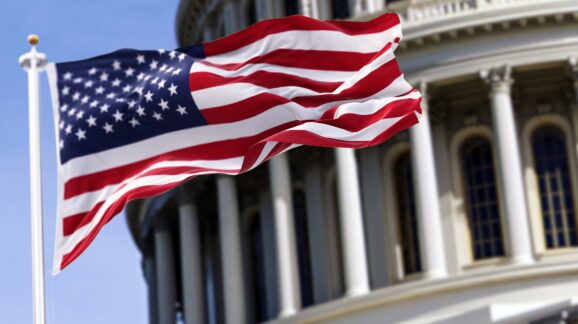Regulatory Reform in the 118th Congress: Separation of Powers Restoration Act

Photo Credit: Getty
The separation of powers is a key aspect of American government. To decentralize power and ensure checks and balances, the Founders divided the federal government into three branches – legislative, executive, and judicial – with distinct and independent powers. The legislative (Congress) writes the laws, the executive (regulatory agencies) administers the laws, and the judicial (Supreme Court) interprets the laws.
In recent years, however, the separation of powers has been undermined by Congress’ overdelegation of legislative powers to regulatory agencies in the executive. The separation of powers has been further degraded by the Supreme Court’s abdication of judicial review through Chevron and Auer deference, by which the Court grants agencies the ability to interpret the laws. This is properly the judiciary’s job.
Together, delegation and deference to regulatory agencies in the executive branch have enabled a massive expansion of administrative power at the federal level. Contrary to the ideals of the American founding, regulatory agencies now have control over wide swathes of our economy and society.
The continued growth of the size and scope of the bureaucracy is exactly what the Separation of Powers Restoration Act (SOPRA) tries to stop and prevent.
The legislation, introduced by Representative Scott Fitzgerald (R-WI) earlier this year, would amend the Administrative Procedure Act to require courts to conduct a de novo (from scratch) review of all relevant questions of law and regulation when they are called into question. This would help restore constitutional order and reassert Congress’s role in writing the laws and the Court’s job in interpreting them.
The House bill has 12 cosponsors. Companion legislation in the Senate was most recently introduced by then-Senator Ben Sasse (R-NE) in 2019.
While the bill would do much to strip unjustified power from unelected bureaucrats, some improvements can be made. As noted by former CEI Senior Fellow William Yeatman:
… there is the possibility that the bill could lead to significant increase in workload for the judiciary. In the event SOPRA becomes law, Congress should be prepared to invest in Article III resources if it becomes apparent that courts are strained. For about $100 million annually, the judiciary could hire another 36 appellate judges and 140 district court judges, plus the accompanying clerks and assistants. That’s chump change as far as the federal budget is concerned.
Nevertheless, it is worth noting that SOPRA was included in a larger regulatory reform measure, the Regulatory Accountability Act, introduced this year by Representative Beth Van Duyne (R-TX). Stay tuned for further CEI analysis of this bill and all the other pieces of legislation included in it.
As we said in a 2016 CEI-led coalition letter supporting SOPRA:
Millions of Americans are suffering under the weight of burdensome regulation, and often find themselves unable to challenge effectively unjust rules as a result of these judicial doctrines. SOPRA is one of the ways in which we can lift this oppressive burden from their backs.
This post is part of an occasional series looking at regulatory reform bills in Congress. Previous posts cover the REINS Act, the GOOD Act, the Less Is More Resolution, the Article I Regulatory Budget Act, and the ALERT Act.